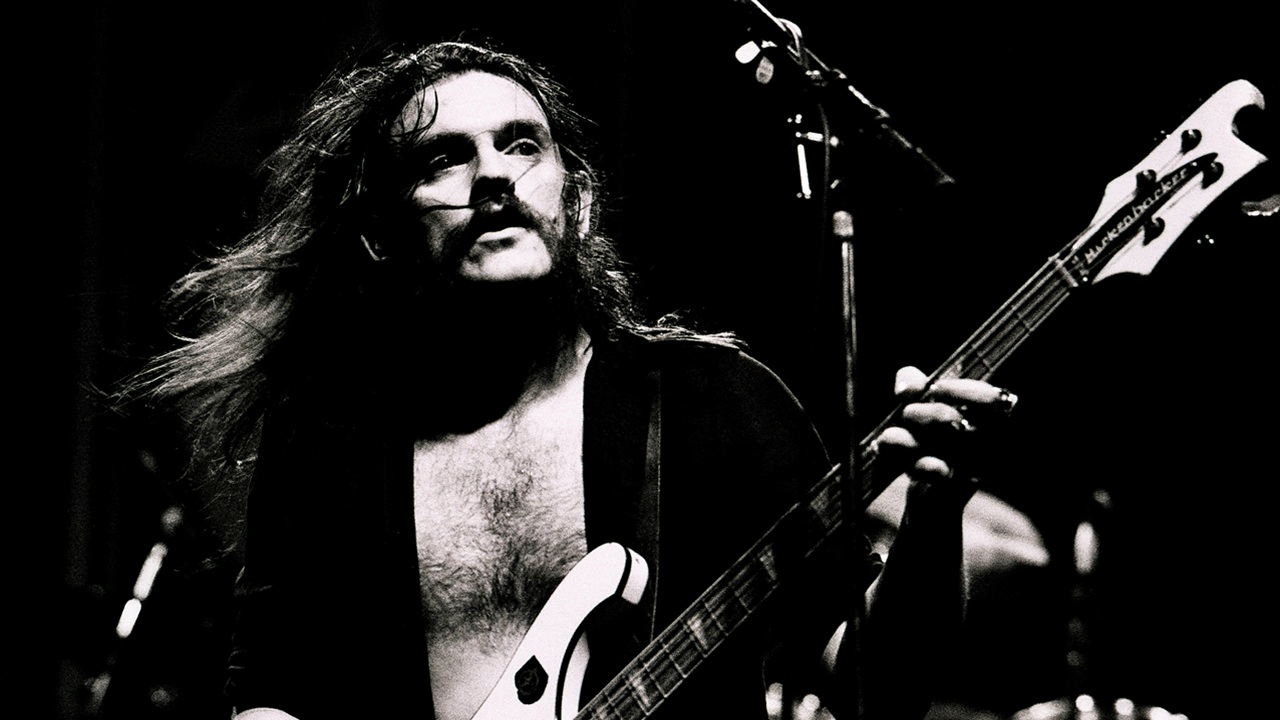A guide to every My Chemical Romance album
With the emo legends set to hit the UK next year, we break down every MCR album so far
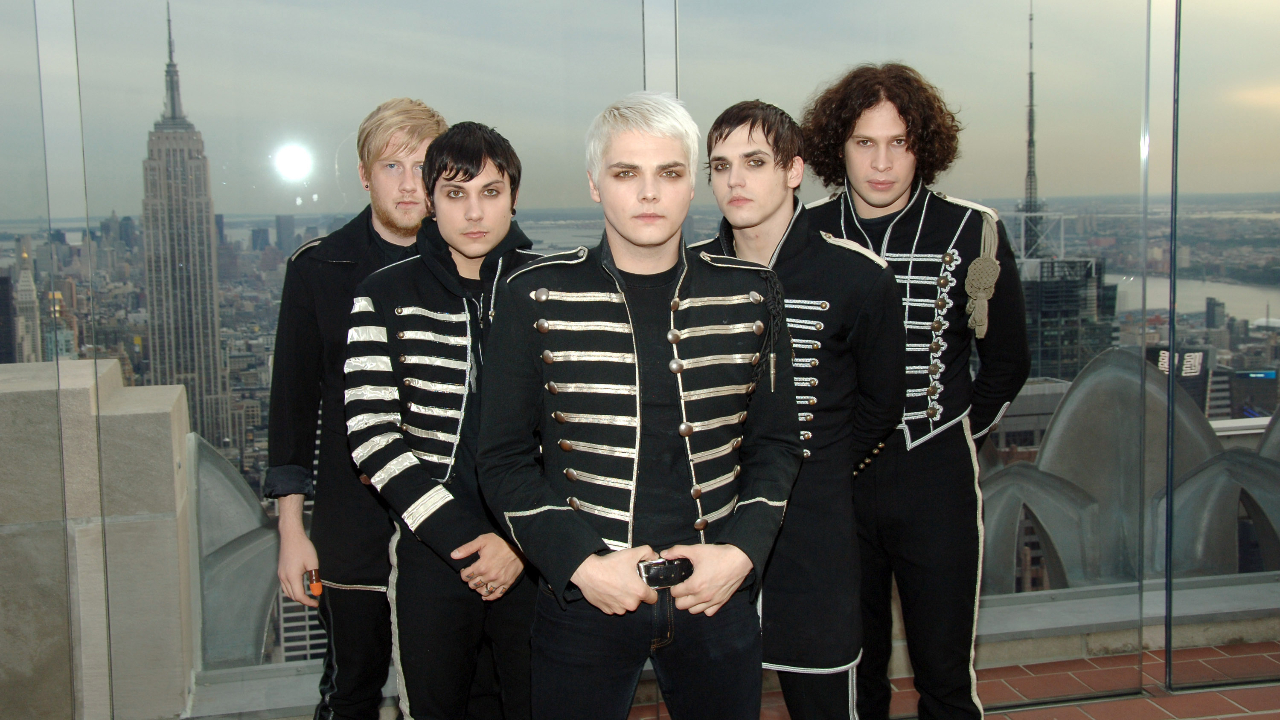
By the time My Chemical Romance formed, something had to give. Generation X had grown older, wearier and, ultimately, more cynical. Grunge was dead. Nu metal was bloated. Commercial rock music was dominated by ‘The’ bands. A generation of disillusioned young music fans were left waiting for some new heroes to pin their hopes to. At the turn of the millennium, rock’n’roll needed a revolution.
More importantly, it needed someone to lead that revolution. Alternative music was in desperate need of some new figureheads. Somebody needed to make dark, aggressive, vibrant rock’n’roll that spoke to the people bored of the whimpering, safe and faceless music that was masquerading as alternative.
Somewhere, in a downtrodden part of New Jersey, five friends were about to make an impact. When My Chemical Romance vocalist Gerard Way sat down with drummer Matt Pelissier to write Skylines And Turnstiles – a song which expressed Way's complex feelings in the wake of the 9/11 terrorist attacks – it was the beginning of MCR as we know them.
After recruiting guitarist Ray Toro soon after, due to Way’s open inability to sing and play at the same time, the as-yet-unnamed trio retreated to Pelissier’s attic to record Our Lady Of Sorrows and Cubicles for what the band now refer to as The Attic Demos. After hearing the demo, Gerard’s brother Mikey dropped out of college to join the band on bass and finally gave the quartet a name, taken from a book by Irvine Welsh – Ecstasy: Three Tales Of Chemical Romance.
Despite the rawness of their early gigs, MCR were determined from the off to set themselves apart from the usual ‘plug in and play’ ethic of their punk rock peers. “When we started this band, we all kind of had the feeling that there was something missing from the current music scene,” Gerard told Metal Hammer at the time. “We want to bring that stadium feel to those small places.”
This ambition impressed Thursday frontman and fellow New Jersey resident Geoff Rickly who, after doing some local gigs with MCR around Jersey, signed the band to his label, Eyeball Records. Now MCR were almost ready to launch themselves on the world, but there was just one piece of the jigsaw missing. On their first show they had supported another Eyeball Records band named Pencey Prep and their frontman, Frank Iero, had made a big impression. After his group disbanded in 2002, Iero decided to become a full-time member of My Chemical Romance – a move that would set MCR’s trajectory alight.
MCR only recorded four studio albums before their split in 2013. But with those records, they captured the imagination of a frustrated generation and swiftly became a globe-conquering phenomenon. Their popularity only grew in the years following their split; the hysteria that has met their recent reunion testament to their enduring legacy. Next year, they continue their celebrations of two decades of The Black Parade with massive, back-to-back showings at Wembley Stadium in July.
The latest news, features and interviews direct to your inbox, from the global home of alternative music.
What better time, then, to go through those four studio albums one by one to dissect MCR's influence and impact? Let's get stuck in.

I Brought You My Bullets, You Brought Me Your Love (2002)
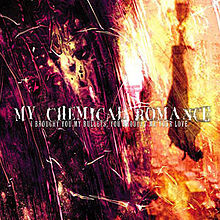
And so the story begins. Crackling with youthful exuberance and by far and away the most raw thing the band ever put their name on, what Bullets lacked in the conceptual depth the band made their forte on future releases, it more than made up for in pulsating, electric energy.
After Gerard and original drummer Matt Pelissier decided to form the band in the aftermath of the 9/11 attacks, MCR’s inception was something of a whirlwind. Ray Toro joined to assist Gerard who, by his own admission, couldn’t play guitar and sing at the same time. The trio spent their time honing their attack and beginning to form the nucleus of their sound during intense recording sessions in Matt’s attic.
Gerard’s brother Mikey joined the band, and in the aftermath of his band Pencey Prep’s split, Frank Iero joined the gang just two days before they were due to begin recording. If this all seems like it happened at a thunderous pace, bear in mind that My Chemical Romance had completed their line-up and begun recording an album within just three months of deciding to start a band.
Thursday frontman Geoff Rickly was a natural choice to produce the band’s debut effort, having already garnered a reputation in New Jersey through putting on shows by the likes of Glassjaw and The Movielife. He understood where the band were coming from, both sonically and conceptually – from eyeballs to entrails. “My Chemical Romance never had any interest in being cool – they were about doing something interesting and fun,” he explained to NJ.com. “If you were going to mock them, you were just feeding into what they were doing. They drew those targets on themselves. The detractors don’t get it.”
The sound of the album perfectly mirrors their story up to this point in that it’s pure chaos. Gerard may have gone on to master harnessing intensity in his vocal performances, but here it’s all wild-eyed insanity and frenzied delivery. The music itself shows shards of the avant-garde edge that would define their legacy but here it gets pulverised and has its lunch money stolen by thrashy guitars and up-the-punx pace, channelling the unstoppable, immovable passion the guys had for the band they had just formed.
In perfect honesty, if you were to pick the finest songs from the band’s star-studded catalogue, very few tracks from Bullets would make the grade. But purely for its buoyant, juvenile charm and the excitement that crackles from every breathtaking second of its length, it’s one hell of a starting point for the MCR rocket ride.

Three Cheers For Sweet Revenge (2004)
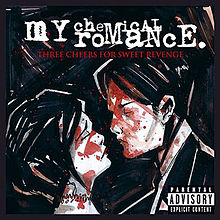
In 2004, bands were growing up. Court jesters Blink 182’s self-titled album a year previous had hinted at a more mature sound and Green Day were about to blow the whole thing sky high by trading two-minute slacker anthems about masturbation and not wanting to tidy your room for the sprawling, epic, anti-war rock opera American Idiot. Popular music was primed for change. My Chemical Romance delivered it.
The hushed opening of Helena was an intriguing preamble that marked MCR out as a group of musicians prepared to experiment and take the scenic route toward pure rock fury. Its subdued scene-setting soon gave way to a deeply personal and heartfelt love letter to Gerard Way’s deceased grandmother. Despite its heavy lyrical content, it still kicked serious amounts of arse, the thrashing verses and breakdown groove of the chorus sating those who just wanted to bang their heads.
Give ’Em Hell, Kid and To The End follow in a much more straightforward punk-rock vein, all urgency and blazing power chords, yet are characterised by Gerard’s bitter and wounded prose. You Know What They Do To Guys Like Us In Prison tries to restrain itself and allows Gerard to wallow in his own fears, but, like Animal in The Muppets going crazy on his drums, MCR can’t keep the subdued gothic shoegazing up for long. Just as the chorus is about to kick in, the band detonate in exhilarating fashion.
Then there comes the song with which My Chemical Romance captured the hearts of so many. I’m Not Okay (I Promise) is a genuine anthem for the disaffected, still sounding as righteously pissed off and fresh as it did almost a decade ago. For all their future success, it’s this moment that turned My Chemical Romance from a band to a cult and is arguably the four minutes that have come to define them.
Three Cheers... was an original, inspiring and youthful collection of dark punk-rock anthems that showed as many glimpses of instantaneous pop as it did the wildly lavish pomp and ceremony that would come to characterise the oncoming juggernaut that was The Black Parade. And although that may be the album most identify them with, Three Cheers For Sweet Revenge still stands as My Chemical Romance’s masterpiece.
The Black Parade (2006)
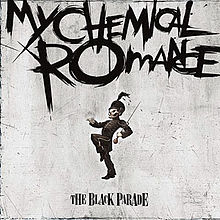
Avant-garde and daring, Three Cheers For Sweet Revenge may be My Chemical Romance's greatest collection of songs. But it was the fearless approach to song, storytelling and imagery on The Black Parade that transformed My Chemical Romance from being just a band that write great songs to a global phenomenon.
Their image changed drastically as they shifted from the vampire-punk guise of Three Cheers... to a look that amalgamated the gothic chic of Tim Burton and the military look of Sgt. Pepper; a look that was copied the world over to the point that you couldn’t walk down your local high street without seeing a representative of The Black Parade. Gerard Way’s hair was bleached blond to give the appearance of a sick patient receiving chemotherapy, which fitted perfectly into the conceptual narrative of the album itself.
The story surrounds the afterlife of a character named ‘The Patient’ and how, after his death, he is whisked back to the biggest event of his life, in this case The Black Parade (visually depicted beautifully by Samuel Bayer in the video for Welcome To The Black Parade – see below for more on that). It harks back to the epic storytelling of Pink Floyd’s masterpiece The Wall and the chimeric, otherworldly excellence of David Bowie’s Ziggy Stardust And The Spiders From Mars.
Despite the high concept, however, it was musically that My Chemical Romance made their gutsiest leaps of all.
From the obvious influence of Queen to more left-field leanings like the anarchic swing of House Of Wolves and the appearance of Liza Minnelli on Mama, it was a visionary move that put them continents ahead of their peers. The balladry on I Don’t Love You and the spectacularly melancholic Cancer remain truly moving, This Is How I Disappear and Dead! are as propulsive and powerful as they are expansive and experimental, and Welcome To The Black Parade – a Number One single in the UK, no less – contains more ideas in one magnum opus than most bands manage in a career. Hell, there really isn’t a moment on the whole album that isn’t captivating.
The lyrical couplets throughout the album are something else. From the defiance of ‘I’m going to show my scars’ on WTTBP to the powerful ‘I am not afraid to keep on living/I am not afraid to walk this world alone’ on Famous Last Words, Gerard empowered the outsider and galvanised personal strength and courage to overcome the trials of life. It was a theme embraced by an entire generation and that was hammered home further in their forthcoming rally against the misguided Daily Mail.
The Black Parade became much more than just an album. It became a way of life that changed the cultural landscape of the world. Fashion, public psyche and mainstream understanding of alternative culture were altered forever but, despite all of this, the legacy of The Black Parade will always be the outstanding music.
Danger Days: The True Lives Of The Fabulous Killjoys (2010)
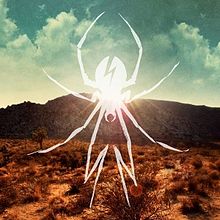
There’s little doubt that My Chemical Romance would have felt at least some pressure going into the recording process for their fourth full-length album. With their previous two efforts they had released the record that broke them into the public consciousness, and followed it up with one that catapulted them into stadia across the globe, transforming them from a mere band into a worldwide phenomenon. As far as high-water marks go, theirs was nearly causing a flood warning.
That cauldron of anticipation ultimately led the Chems to a surfeit of songs. The writing process yielded dozens of tunes which were eventually deemed unsuitable and scrapped, with the band admitting they felt, for a while at least, unsure of what direction to move in. The turning point in Danger Days’ creative gestation seems to have come with the composition of first single Na Na Na (Na Na Na Na Na Na Na Na Na), which summed up everything Gerard Way felt about what they had produced for their new opus thus far: it was adequate but totally disposable.
From that point on, MCR cut completely loose, indulging both their more left-field musical influences and their wildest imaginations to create something unique and compelling in its vibrancy. To that end, Danger Days is a concept album which focuses around a gang of four vigilantes living in the desert around the fictitious Battery City in post-apocalyptic California. That the band members each play their own character in this tale (Gerard Way as Party Poison, Ray Toro as Jet Star, Frank Iero as Fun Ghoul and Mikey Way as Kobra Kid) is remarkable enough, but the level of detail invested into the narrative arc of the album is quite astonishing.
From the videos to the website for the evil Better Living Industries that the band are trying to overthrow, to a limited-edition EP featuring the music the gang would listen to in their signature Pontiac, the effort is painstaking and the effect immersive. Lyrically, too, the whole of Danger Days concerns the Killjoys’ struggle and deals in metaphor with social, artistic and even political woes. As far as pushing a storyline goes, it’s hard to think of a more committed or complete record from the last two decades.
But it’s the musical departure from previous MCR efforts that stands out the most. There’s none of the hushed cemetery vaudeville of The Black Parade here, and from the Stooges-esque riff of Na Na Na to the sweeping chorus of SING, to the messy punk’n’roll of Vampire Money, this is an unmistakably upbeat record. The overtones of garage rock à la The Hives are merged with the pumping punk of songs like Planetary (GO!) to produce something shot through with stunning pop sensibility.
Plenty of critics were baffled at the time by MCR’s determination to change seemingly everything about themselves with Danger Days, but looking back now, it seems totally in keeping with the band’s nature to flip the script and keep us all guessing. They always did it their way and this final full-length of theirs is perhaps the ultimate evidence of that. Red hair, ray guns and rollicking great tunes – ignore this album at your peril.
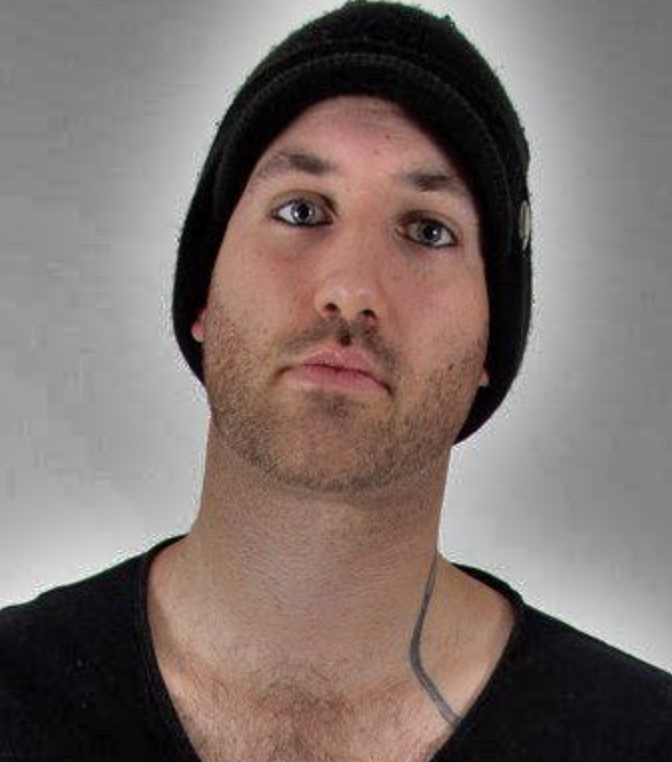
Stephen joined the Louder team as a co-host of the Metal Hammer Podcast in late 2011, eventually becoming a regular contributor to the magazine. He has since written hundreds of articles for Metal Hammer, Classic Rock and Louder, specialising in punk, hardcore and 90s metal. He also presents the Trve. Cvlt. Pop! podcast with Gaz Jones and makes regular appearances on the Bangers And Most podcast.
You must confirm your public display name before commenting
Please logout and then login again, you will then be prompted to enter your display name.
![My Chemical Romance - Helena [Official Music Video - 4K Film Restored] - YouTube](https://img.youtube.com/vi/UCCyoocDxBA/maxresdefault.jpg)
![My Chemical Romance - Teenagers [Official Music Video] [4K] - YouTube](https://img.youtube.com/vi/k6EQAOmJrbw/maxresdefault.jpg)
